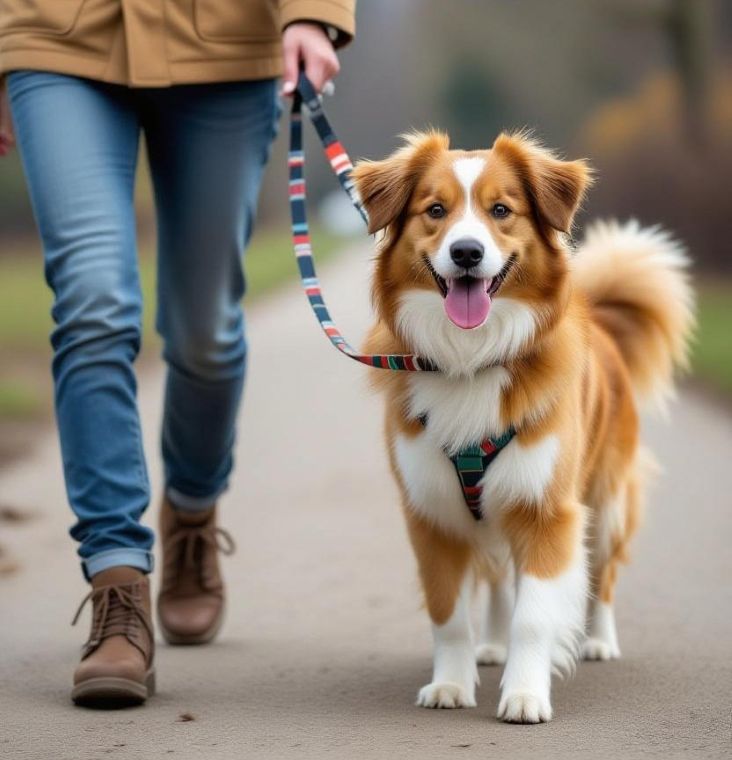Eco-Friendly Dog Gear: How Sustainable Pet Products Reduce Our Pawprint
Every year, billions of pounds of plastic waste end up in landfills and oceans, and the pet industry contributes a surprising share of it. From synthetic leashes and nylon collars to disposable toys, the environmental footprint of our furry friends is larger than most pet parents realize. But a quiet revolution is underway. More brands are turning to eco-friendly dog gear, strollers, harnesses, and accessories made from recycled and sustainable materials, proving that caring for pets and the planet can go hand in paw.
Eco-conscious pet owners are driving a shift that brands can no longer ignore. Many small businesses and innovators, like the team at Love My Pet, are embracing sustainable materials and ethical production practices to meet the growing demand for green pet care. These companies understand that pet owners want high-quality gear that minimizes waste while keeping their dogs comfortable and stylish.
The Green Shift in Pet Accessories
Pet gear is evolving beyond traditional materials. Today’s eco-friendly products include collars made from bamboo fibers, leashes crafted from upcycled climbing ropes, and pet strollers built with frames of recycled aluminum and fabrics spun from plastic bottles. These innovations are not just marketing gimmicks, they represent a true effort to reduce waste and create circular systems within the pet industry.
For instance, many modern dog strollers now use waterproof fabrics derived from post-consumer plastic waste. This approach keeps bottles out of oceans and gives them a second life as durable, weather-resistant materials. Some brands even use biodegradable rubber wheels and non-toxic dyes, ensuring that the entire product life cycle remains planet-friendly.
Why Sustainable Pet Products Matter
Choosing eco-friendly dog gear is more than a style statement, it’s a small but meaningful act of environmental responsibility. Traditional pet accessories are often made using petroleum-based plastics and treated fabrics that take decades to break down. By switching to recycled and organic options, pet owners help cut down on the demand for virgin materials and reduce carbon emissions linked to production.
- Less waste: Recycled materials divert plastic from landfills.
- Lower emissions: Sustainable production uses fewer resources and less energy.
- Safer for pets: Natural fabrics are free from harsh chemicals that can irritate skin.
Eco-friendly gear also aligns with a growing global movement toward responsible consumerism. When pet parents support ethical brands, they contribute to larger systemic change. Every purchase sends a message that sustainability is essential. You can read more about how animal-related initiatives contribute to environmental balance through this insightful guide on the environmental benefits of breeding fennec foxes.
Brands Leading the Eco-Friendly Pet Movement
Across Europe and beyond, eco-conscious brands are proving that sustainability and style can coexist. From independent artisans to established manufacturers, more companies are prioritizing transparency, ethical labor, and renewable resources. Dog strollers, once a symbol of luxury, are now being reimagined as eco-friendly mobility tools for elderly or injured pets, using plant-based fabrics and recyclable metals.
Brands like the team at Love My Pet showcase how thoughtful design can minimize impact without compromising quality. Their products often reflect a deep respect for craftsmanship and animal well-being, setting a standard for others to follow in the pet care community. This shift is inspiring more pet owners to consider the origin and afterlife of every leash, collar, and carrier they buy.
Small Choices, Big Impact
Every sustainable purchase creates a ripple effect. By choosing eco-friendly dog gear, pet owners reduce waste and support companies that care about the environment. Over time, these collective actions influence the market and encourage more innovation in sustainable materials.
Simple changes make a big difference. Switching to compostable poop bags, opting for organic shampoos, or choosing biodegradable toys are all ways to make pet care greener. Even repairing and reusing gear instead of replacing it helps reduce waste.
The Future of Sustainable Pet Care
The next generation of pet products will likely focus on circular design, items that can be fully recycled or safely returned to nature. Advances in bio-based plastics and closed-loop manufacturing are making this future possible. The goal is to create pet gear that not only lasts longer but also leaves a lighter pawprint on the Earth.
Ultimately, eco-friendly dog gear represents more than a passing trend. It’s part of a broader cultural awakening toward conscious living and responsible ownership. As more people recognize that sustainability benefits both pets and the planet, the demand for green alternatives will continue to grow. And with innovators like the team at Love My Pet leading the charge, the future of pet care looks brighter, cleaner, and kinder for all species.


